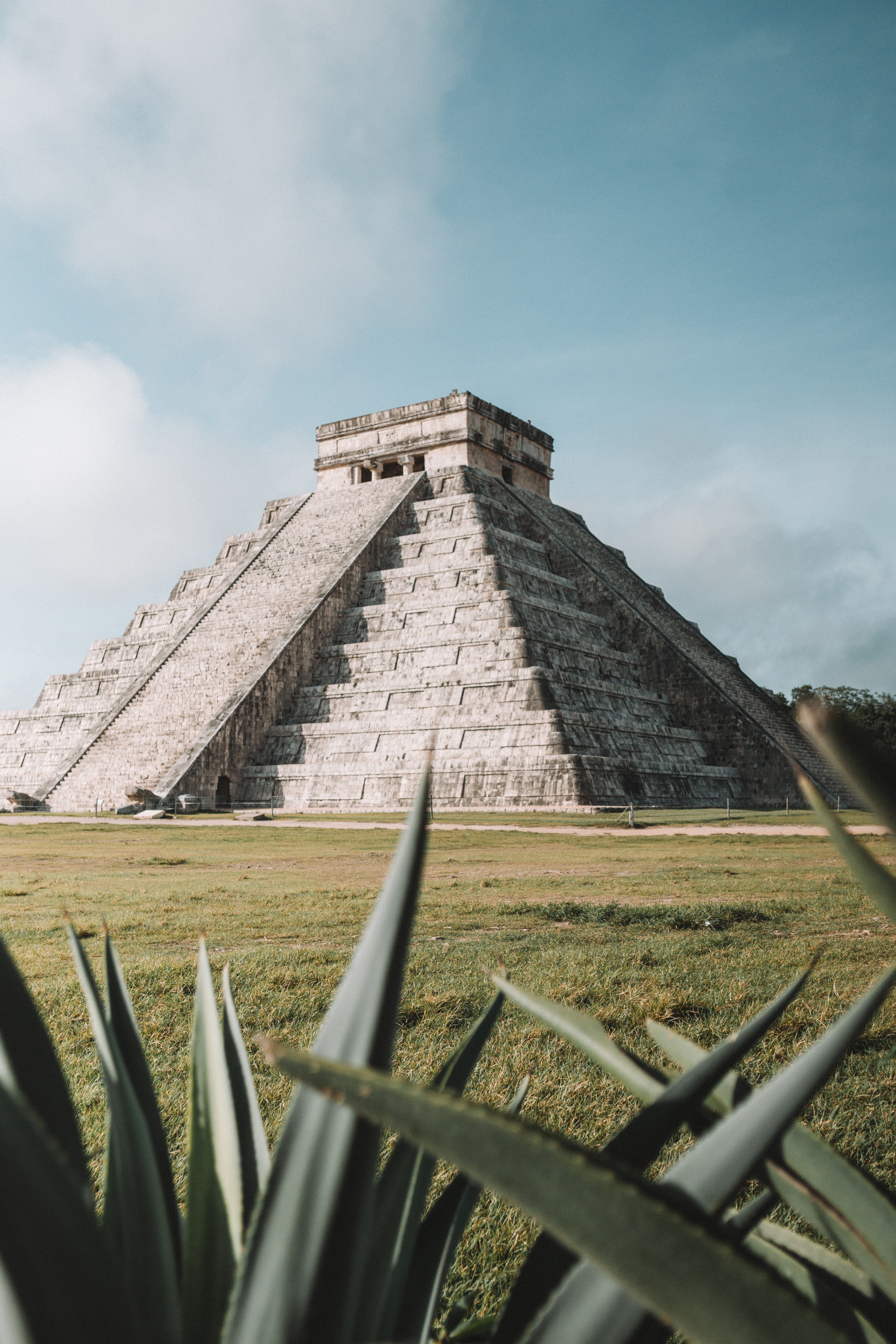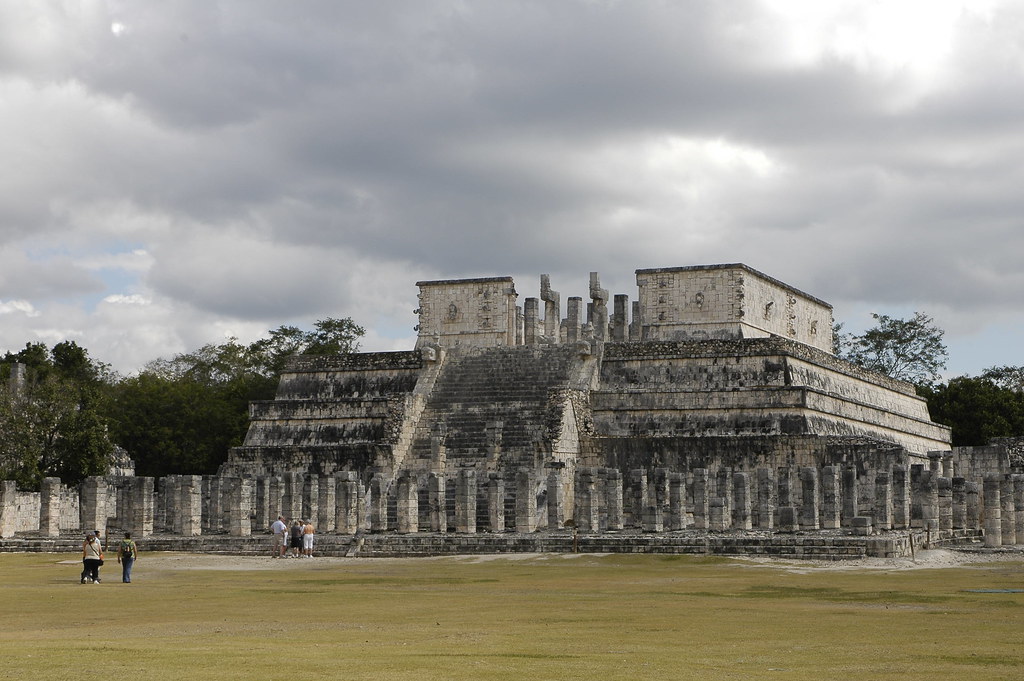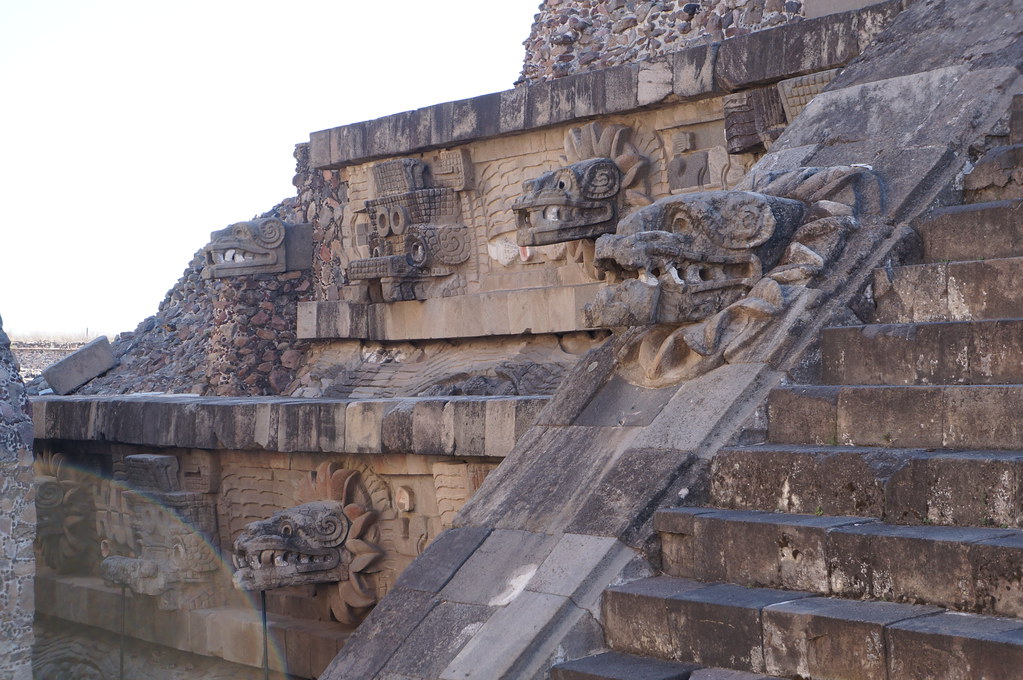2.5: Ancient Astronomy in the Western Hemisphere.
( \newcommand{\kernel}{\mathrm{null}\,}\)
2.5.1 The Nazca Lines of Peru
Archeologists have discovered a rich history of astronomy practices in the New World, especially in the construction of their temples and other major buildings. For example, the Incan city of Machu Pichu, which was probably the estate of the emperor. This site includes a solar observatory/sun temple that was used for marking the solstices. They also used sticks to mark days when the sun is directly overhead. Because they lived near the equator, the sticks would cast no shadow at noon on the summer solstice. The Javan people of Indonesia employed a similar method.
Prior to the Incans, the Nazca culture carved lines in the deserts of Peru. These Nazca lines are patterns in the ground that form images of animals and other figures. Many of these lines are aligned to certain stars. While the exact purpose of these lines is still subject to debate, many archaeologists have concluded that the stellar alignments point toward them being used as calendars.

2.5.2 The Mayans
The Mayan culture flourished from 400-1200 CE. They accurately predicted eclipses. The planet Venus played an important role in their calendar and the Mayans associated it with their god of war. The Mayans built their city of Chichen Itza with several buildings aligned to the positions of Venus throughout the year. They even based their calendar on the cycles of Venus as well as the Sun. They even built observatories with Venus in mind. For example, El Caracol, a “crooked” observatory had windows aligned with Venus’ northernmost and southernmost settings. Completed sometime around 1000 CE, El Caracol also had alignments with the equinox setting of Venus, which indicates they used Venus to make the passage of the seasons.




The Mayans also had a sophisticated system of mathematics based on the number 20 instead of our modern base 10 system. They also invented the concept of the number zero, which may not seem to significant, but western civilization did not have the number zero until they imported it from India/Arabia during the Crusades. While the Spanish burned many of the Mayans’ manuscripts, destroying much of their astronomical knowledge, some of their records about Venus and eclipses did survive.
The Mayans also built their temples with the movements of the Sun. For example, their Temple to Kulkulkan aligned such that on the vernal equinox, the Sun cast a shadow along the steps creating the illusion that Quetzalcoalt’s serpent body was descending from heaven.
2.5.3 Astronomy in Southwestern United States
The Anasazi lived in the “four corners” area of the southwestern United States. Like other cultures, they built structures marking the solstices and equinoxes. For example, in Chaco Canyon, they built (Cir. 1000 CE) the “Dagger of Light,” which produces a projection of Sunlight onto a spiral pattern on opposing rock formations on both the solstices and equinoxes.
The Hohokam tribe built Casa Grande in Arizona around 1350 CE. Like the Dagger of Light, Casa Grande has holes on opposite sides of the building that align with the rising Sun on the summer solstice.


Finally, many of the plains tribes in North America drew star maps and sighting circles on the ground to mark rising points of the Sun on the solstice and the helical rising points of the stars. For example, the Big Horn Medicine Wheel in Wyoming, a large circular pattern of stones marks the solstices and other points of rising and setting.





